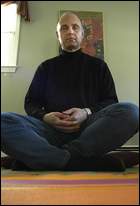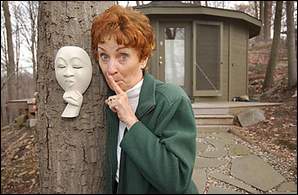This week is National Suicide Prevention Week. It is heartbreaking to think that suicide is that pervasive of a problem in our society to warrant such a week. And yet it is. Suicide takes the lives of nearly 30,000 Americans every year. There are twice as many deaths from suicide as there are from HIV/AIDS. It is the third leading cause of death for 15-24 year old Americans. And there are more than 800,000 attempted suicides every year.
Those are the statistics.
And then there are the stories.
Perhaps the worst thing about suicide is the pain that it causes to those left behind. These people are known as the survivors. And telling our stories can help us to heal from the trauma of this experience.
When Gia Allemand, the reality television star, took her own life last month, the topic of suicide became a part of a national discussion. Gia’s distraught mother spoke with Dr. Phil about her feelings, which echo that of many survivors.
Sometimes there are warning signs. And then sometimes the incident seems to come from out of nowhere. That’s how it was when I found out that my friend Ophir had died. I remember getting a phone call from our mutual friend Curt. He was in a state of disbelief as he had just gotten the news. It took a few phone calls to figure out exactly what had happened. Ophir had committed suicide.
I knew Ophir as an extremely talented and creative composer. We worked together on several music projects. We had a close friendship, and a great respect for each other. Ophir helped me bring my songs to life. When Ophir had a hernia operation, I had him stay at my home while he recovered.
I was aware that Ophir used drugs. I spoke with him about it many times, offering him alternatives and suggestions for a more healthy way of life. But he did not want to hear it. He did not want to talk about it. He always functioned perfectly well when we were working, and he assured me that he did not have a problem. When I heard that Ophir had died, I assumed it was an accidental overdose. But there was no accident about Ophir’s death. He planned it. He put a rifle in his mouth and shot himself.
Like most people do in this situation, I started asking myself all kinds of questions. What could I have done to prevent this? Why didn’t I see this was coming? What was so terrible that he had to do this? I felt awful, not only for myself, but for his family, everyone who loved him.
Suicide is such a violent act. It is terribly hurtful to everyone left behind with so many unanswerable questions. I don’t know what brought Ophir to his decision. I do know and recognize that although our relationship has changed, he is still very much a part of my life. I have the songs we wrote together on my websites. He taught me so much about music and the creative process. When certain songs come on the radio I am reminded of him, and his amazing energy, sweet smile, and sly sense of humor. His words still influence me. His music still moves me.
I know that the agreement that Ophir and I had was complete even before his death. There was no unfinished business between us. We learned from each other, both creatively and personally. At his funeral I met many others who felt the same way.
This was the second time that I had been affected by suicide. When I was around 11 years old, shortly after my parents’ divorce, my mother’s brother took his own life. He was a Vietnam veteran, and he became hooked on drugs while he was in the war. When he got home, he couldn’t handle normal life after seeing everything he saw in combat. His drug problem got worse, he would have hallucinations and he overdosed to escape the pain.
I saw how this shattered my mother and grandmother. He also left behind a wife and baby daughter. It was tragic. As a child I could sense how awful this was for everyone. And now as an adult I can see how my uncle’s life mattered. Even in the short time he was with us, he brought joy to his mother, and love to his family. He struggled with life, and he chose to die. But while he was here he lived, and he had the opportunities and experiences that allowed him to learn and grow. He may not have made the best choices, but they were his choices. In situations like this you have to get past the blame, and the guilt, and know that there is nothing you could have done to change the outcome. For whatever reason, this person took his own life. It is not rational, or logical, or right. But it is irreversible. And we learned by going through all of this together as a family.
Chaim Nissel, Psy.D., is the Director of Yeshiva University’s Counseling Center in New York City, and an expert with the American Association of Suicidology. He has this to say about coping with the loss of a loved one from suicide:
The death of a loved one by suicide has all the trappings of conventional grief plus a host of other intense, difficult and confusing emotions. These include feelings of guilt and responsibility, anger and blame and often a disconnect with the individual who killed himself. When we lose a loved one to cancer or AIDS, we accept the reality, feel the loss, grieve, yet we don’t blame ourselves. Following a suicide, it is hard to accept the reality that the individual chose death. We feel responsible and wonder, ‘If I had only… he’d be alive today.’ We would rather blame ourselves because it is difficult to place the responsibility where it belongs, on the individual who killed himself.
One who experiences the death of a loved one to suicide is fittingly called a ‘survivor.’ They must now learn to cope and survive their loss. Most survivors experience anger, guilt and emotional turmoil. There is often anger at the deceased for taking their own life, it is seen as selfish, because their pain ends, but the survivor’s pain begins. Guilt over what they could have and should have done to prevent it (although if the loved one wanted to die, they would have despite your interventions). We like to think that we can control events, but when another person is in such emotional pain that they want to die, the choice to kill themselves remains their choice, despite everything that you can and did offer them.
There is still tremendous stigma and shame associated with suicide and when the fact that one died by suicide is hidden or denied, it becomes so much more difficult to come to terms with it. When we try to ‘cover’ or pretend the death was accidental, it takes its toll on the survivors and will impact them the rest of their lives.
To help us find closure, Dr. Nissel has this advice:
— Talk about it! Find supportive people in your life who you can share your feelings with.
— Focus on the person’s life and the good memories you have of the person. Know that you will never truly know why he killed himself.
— Recognize that the person’s pain is over, now it’s time to start healing your own pain.
— Have answers prepared for when people ask questions. This will help reduce your anxiety and emotional reactions. You can say “he took his own life,” or, “died by suicide,” or, even “he suffered a long illness.” It someone is persistent, blaming or insensitive, you can say “it is too difficult to talk about right now,” and end the conversation.
— Know that you are not responsible for your loved one’s death, in any way. Only the individual who killed himself is responsible.
— Know that the likelihood is that the person was in such pain, for so long and now the suffering is over. 90 percent of those that die by suicide suffered from some form of mental illness, most commonly an affective disorder such as depression or bipolar disorder.
— Seek resources such as professional counseling, support groups and books.
— Being exposed to a suicide makes you somewhat more susceptible to suicidal thinking. If you are having thoughts of killing yourself, get help immediately by contacting a local psychologist or psychiatrist. If you feel you may act on these suicidal impulses, call 911 or go to your local emergency room.
The American Foundation for Suicide Prevention (AFSP) helps survivors of suicide. Actress Michelle Ray Smith, who played “Ava” on the daytime drama Guiding Light, talked about her father’s suicide in an interview with Soap Opera Digest magazine a few years back. She said that participating in AFSP’s “Out of the Darkness” event, an overnight 20-mile walk, helped her connect with people who had been through the same thing. “For the first time since he died — it’s been three years in September — I feel at peace.” Talking with people, sharing our stories, is one way that we can help each other to heal.
For more by Lissa Coffey, click here.
For more on healthy living health news, click here.
Need help? In the U.S., call 1-800-273-8255 for the National Suicide Prevention Lifeline.













